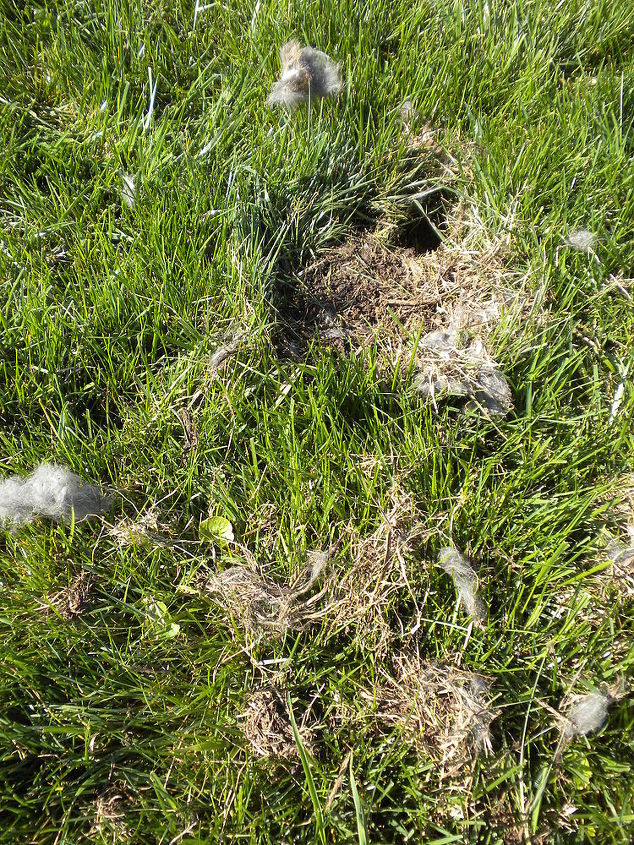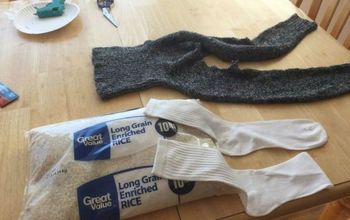How do you kill poison ivy without killing all your ground cover?

Related Discussions
GNATS - How to get rid of them?
Somehow my house and garden got tiny gnats that killed my fuchsia plant and fly everywhere. I have tried ALL the Web recommendations - soap and oil dishes, sand in th... See more
Marigolds growing! Should I pinch the buds?
My marigold plants are growing. I heard that pinching the buds until Autumn will allow them to grow without killing the plant. Is this true?
Growing garlic
Growing our first garlic, should we wait until the leaves are drying out before we pick it? Husband picked first one today along with our first potatoes.
How to keep mice out of your garden?
Hi everyone, I have mice in my garden destroying my vegetables and I have also noticed them in the barn and shed. Please can someone tell me how to prevent them from ... See more
What's the best flower/plant to grow in Texas?
I know that opinions vary, but what's your opinion?!I have great luck w Rosemary plants. Green all year long.
How do you kill wild onions without killing your grass?
Can someone tell me what kind of animal this was in my yard?
I thought maybe a rabbit was burrowing in my yard, but it's almost dead center of my lawn (not a very smart rabbit). The hole is not very deep, and I replanted it onc... See more




Use a specific product...some very good ones available
The new gel you put on the leaves has not been very successful for me, but may be worth a try if you only have a little. Since I am VERY allergic to poison ivy, I went with the "birds of a feather stick together" mentality, so if you can't kill the poison ivy because it is "protected" by the ground cover (vinca and other vines), I decided to kill it all and replace with something that is less dense, making it a little easier to try to stop the poison ivy in the growth. I killed all of the ground cover and poison ivy, then had to pay to have someone to come clear out the dead plants, since the vines and dead leaves can be just as bad for those of us who are sensitive. Whatever you do, don't burn the dead leaves and vines. The oil droplets that cause the rash can travel on the wind in the smoke, causing irritation in the respiratory system as well as eyes and skin. Bag it, close it, send it to the landfill.
I am sure that others will advocate trying to get rid of the poison ivy with lots of rubber gloves, long sleeves, etc., but if you are very allergic, it is not a good way to go. Too easy to get the oils in your eyes, and that is most uncomfortable.
Poison ivy grows fairly quickly and propagates itself by underground rhizomes and seeds. Seeds are quickly spread by birds and other animals that eat the small fruits. Poison ivy can get started in the landscape from a seed dropped by a bird and may quickly become a widespread problem. It often grows in shrubs and groundcovers making it difficult to control.
Don’t confuse poison ivy with Virginia creeper (Parthenocissus quinquefolia), which also grows as both a groundcover and climbs trees as a vine. However, Virginia creeper plants have compound leaves with five leaflets rather than three.
For light infestations, dig up small plants. You can also repeatedly cut back the plants to ground level. Eventually they starve to death. Start cutting early in the spring, about the time leaves unfold. When new growth appears, cut again. Inspect the plants every week or two. Whenever you see green growth, cut the shoots back to the ground.
To eradicate poison oak and poison ivy chemically, use an herbicide that contains glyphosate (Roundup), 2,4-D amine (Spectracide Weed Stop For Lawns, Ortho Weed-Be-Gone Max, Ferti-Lome Weed Out For Lawns), dicamba, mecoprop (Bayer Advanced Weed Killer for Lawns Concentrate) and triclopyr (Ortho Weed-Be-Gone Clover And Oxalis Killer) These herbicides can kill desirable plants, so be careful. If the poison ivy or poison oak is growing among plants you want to save, you can cut back the poison ivy or poison oak and spray or paint the herbicide only on the freshly cut stems or stump. If there are no desirable plants nearby, you can spray or paint poison ivy and poison oak without cutting them back first. Read and follow label directions whenever using any herbicides.
The herbicides glyphosate (Roundup), 2,4-D amine (Spectracide Weed Stop For Lawns, Ortho Weed-Be-Gone Max, Ferti-Lome Weed Out For Lawns), dicamba, mecoprop (Bayer Advanced Weed Killer for Lawns Concentrate) and triclopyr (Ortho Weed-Be-Gone Clover And Oxalis Killer) are translocated from the leaves and cut stems to the rest of the plant, eventually killing the shoots and roots. Repeated applications may be necessary. Depending on weather and other factors, it may take one to several weeks before you discover whether you have successfully eradicated the plant, so be patient.
Herbicides work better when you spray at the right time. Poison ivy and poison oak are most sensitive to 2,4-D amine and dicamba treatments in late spring or early summer when the plants are actively growing rapidly. Triclopyr offers the best control after the leaves fully expand in the spring and before leaf color changes in the fall. Glyphosate offers the best control when applied between 2 weeks before and 2 weeks after full bloom (early summer) and should be mixed to a 2% solution.
In lawns, many of the 3-way herbicides may be applied to tall fescue, bermudagrass, zoysiagrass, St. Augustinegrass and centipedegrass for poison ivy control. Be sure to read the label for safe use on each turfgrass species and for the amount of product to use per gallon of spray. Applications may be repeated. Triclopyr may be safely applied to tall fescue lawns only, although some products are not labeled for use on residential lawns.
Lemon juice on a hot day..dries it right up and doesn't poison the ground
Try covering the surrounding plants that you don't want to harm
birds shelter i the poison ivy bushes in winter. Kill that and your helping to kill birds
Sorry for the news, Strong arm and Strong fork and Good Gloves. Just keep at it